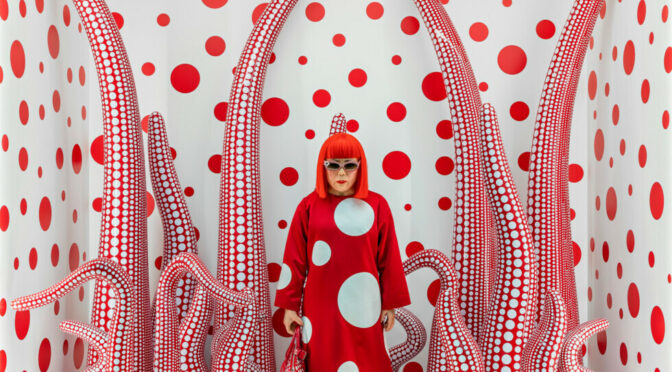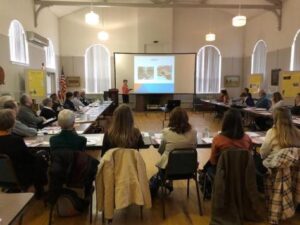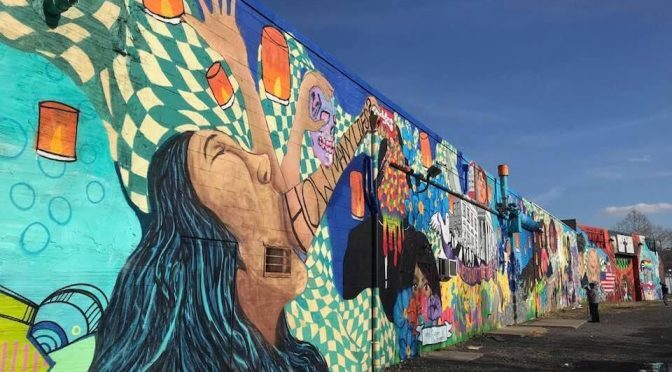Core Faculty
Suzanne Ishee, President, Center for Creative Placemaking, is a veteran of the NY theatre who is recognized as an Emmy and Drama Desk award winning producer, actor and playwright. She holds degrees from the University of North Carolina and Manhattan School of Music and several post-graduate certifications from the Commercial Theatre Institute and NJ Real Estate Commission and was for two seasons the Leonard Bernstein Fellow at the Tanglewood Institute. She is an adjunct professor at NJIT teaching in the Theatre Arts and Technology program.
Stuart Z Koperweis – President, Economic Development Strategists and Vice-President, Center for Creative Placemaking is one of the premier individuals in the economic development and revitalization field in New Jersey. He is known as one of the foremost authorities in the State of New Jersey and the New York metropolitan region on the effective workings of Business Improvement Districts (BIDs). Mr. Koperweis holds degrees from Boston University and American University.
Dr. Colette Santasieri possesses over 30 years of practical and applied urban, environmental, transportation, and land use planning experience in both the public and private sectors. She has extensive experience and expertise in strategic planning; community visioning for redevelopment; transit oriented development; sustainable planning and design of communities, properties, and transportation systems; brownfields redevelopment; and identifying and analyzing a project’s impact on socio-economic, natural, and man-made settings as well as on environmental justice communities. Dr. Santasieri holds diverse, yet complementary degrees in Urban Systems (PhD), Civil Engineering (MS), and Environmental Planning and Design (BS) providing her a well-rounded perspective in addressing the challenges and opportunities of creating sustainable and resilient communities and regions. She is an executive with NJIT’s NJ Innovation Institute.
Lecturers:
Darius Sollohub is a Faculty Member in the College of Architecture and Design at NJIT teaching architecture and planning courses. He conducts funded research, and lectures and publishes on various topics. He previously served as School of Architecture Director and as Infrastructure Planning Program Director. His research addresses design pedagogy, affordable housing, transit-oriented development, parking, earth art and transportation systems. Professor Sollohub has received funding from the NEA, HUD, USDOT and many New Jersey State agencies. He has collaborated extensively with the Regional Plan Association, serving on its Transportation and New Jersey Committees. Darius is currently completing the book: Millennials in Architecture: Design and Disruption.
Roger Smith is Design Director for Gensler in Morristown. His expertise lies in project work in the fields of office development, mixed-use, hospitality and master planning, He has 30 years of industry experience, with previous roles including senior designer and associate principal at other global architecture firms working on projects in locations such as Kuwait, Abu Dhabi and Dubai. Mr. Smith earned his master’s degree in architecture from the University of Pennsylvania. He is an adjunct professor at NJIT teaching MIP Studio.
Tom Dallesio is President, CEO and Publisher of Next City. He is a nationally recognized urban planner, nonprofit leader and educator with more than three decades of experience in city and regional planning, public policy, and nonprofit management. He was founding director of the Center for Resilient Design at NJIT and remains as an adjunct professor teaching land use and infrastructure planning. Mr. Dallesio served as the executive director of Leadership New Jersey, a statewide program strengthening civic leadership through experiential learning. He directed RPA’s New Jersey office and managed six New Jersey Mayors’ Institutes on Community Design, and promoted affordable housing, transportation finance and property tax reforms.
Jean Leonard is Director of Marketing for the Mayo Performing Arts Center in Morristown and has over 12 years experience in marketing, including promotions, budgeting, media planning and placement, social media, client services and project management. Formerly, she was Senior Marketing Manager for Serino Coyne, the largest full service advertising and marketing agency in the live entertainment industry. At SC, her major clients included Disney Theatricals and the national touring companies of Wicked and Jersey Boys. Mrs. Leonard holds a B.A. in Journalism and Dramatic Art from the University of North Carolina at Chapel Hill and an M.A. in Arts Administration from Indiana University.
Thomas Motyka is Senior Executive Director of Smart Cities Innovation at NJ Innovation Institute working closely with developers, public officials and industry to create an open test-bed where new technologies to solve urban problems can be deployed and evaluated. These include “Smart City Internet of Things” projects for the integration of traffic, transit, parking, public safety, healthcare delivery and infrastructure resiliency into a cohesive data-driven system designed to improve the quality of life for residents and visitors to our urban centers.. Mr. Motyka formerly served as director of sales for IBM’s Global Technology Services Business Unit. He holds an M.B.A. from Fairleigh Dickinson University and a B.S. in electric engineering from the New Jersey Institute of Technology.
In addition, other dynamic guest speakers will bring their expertise into the classroom throughout the course schedule. Class size is limited, so don’t miss out.





